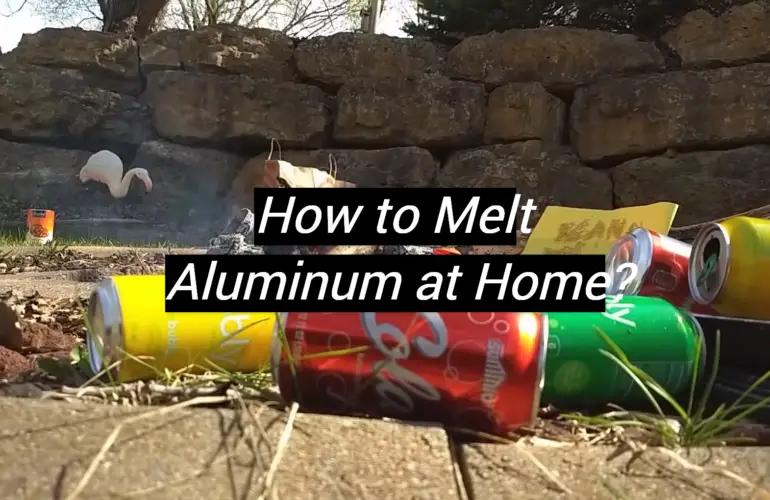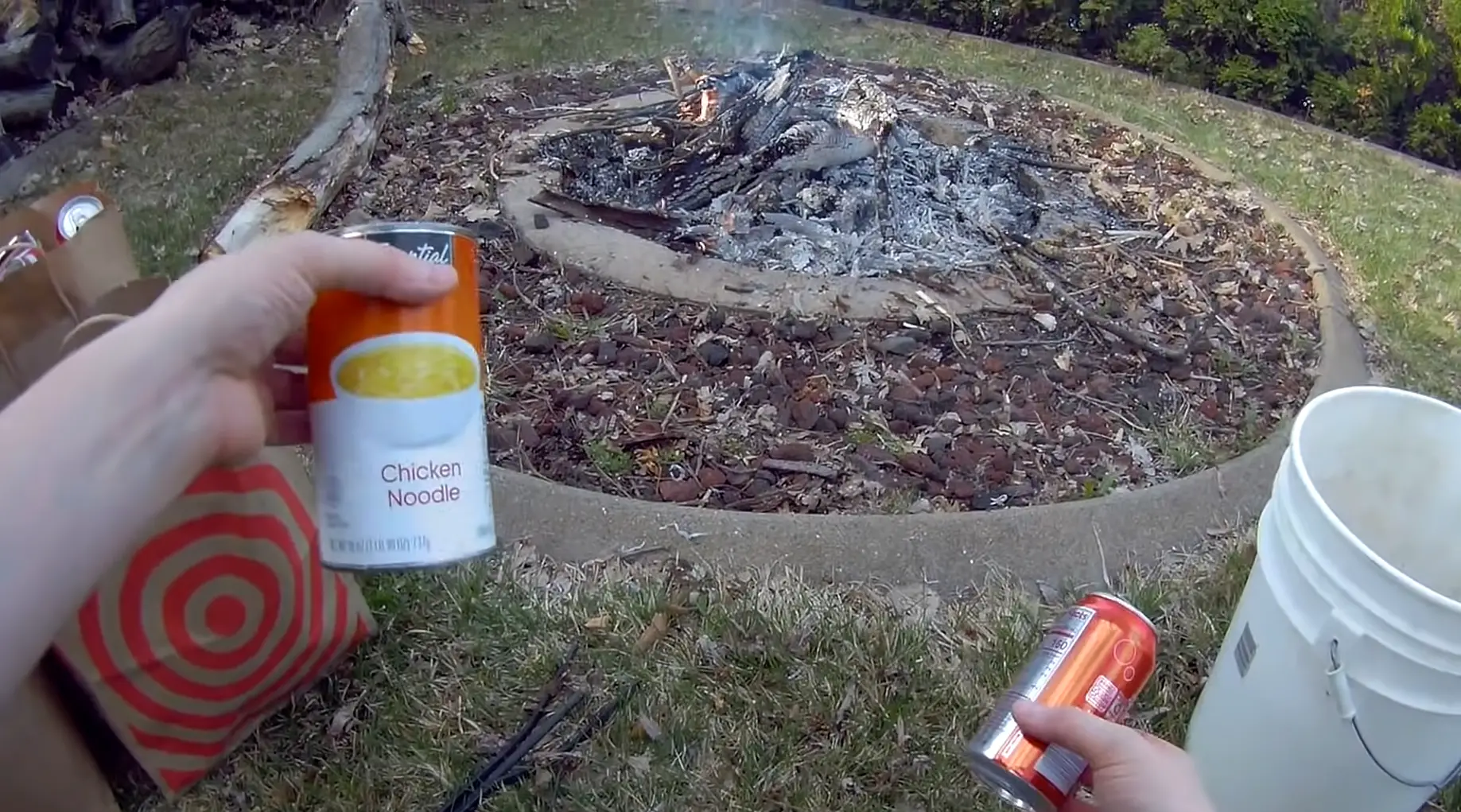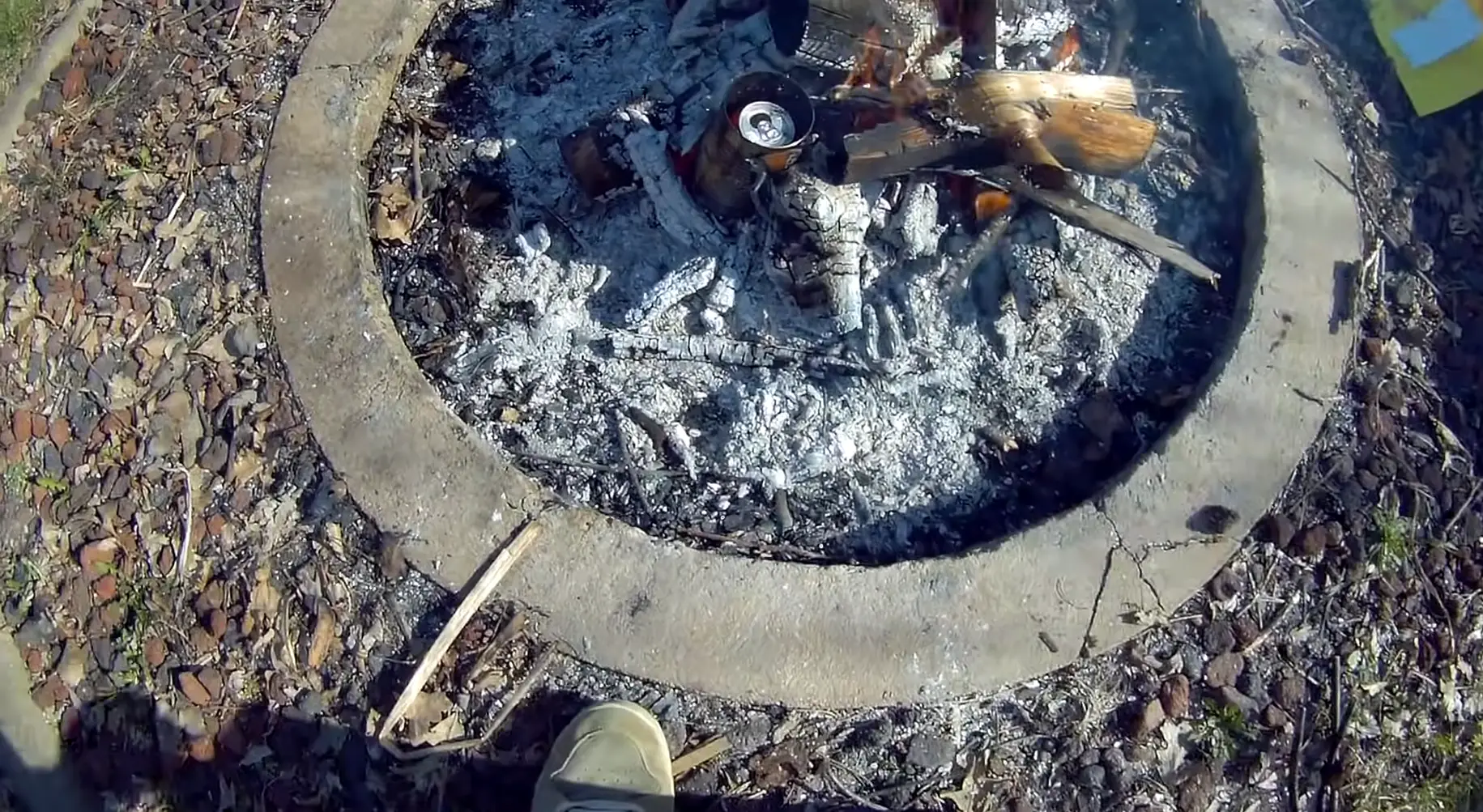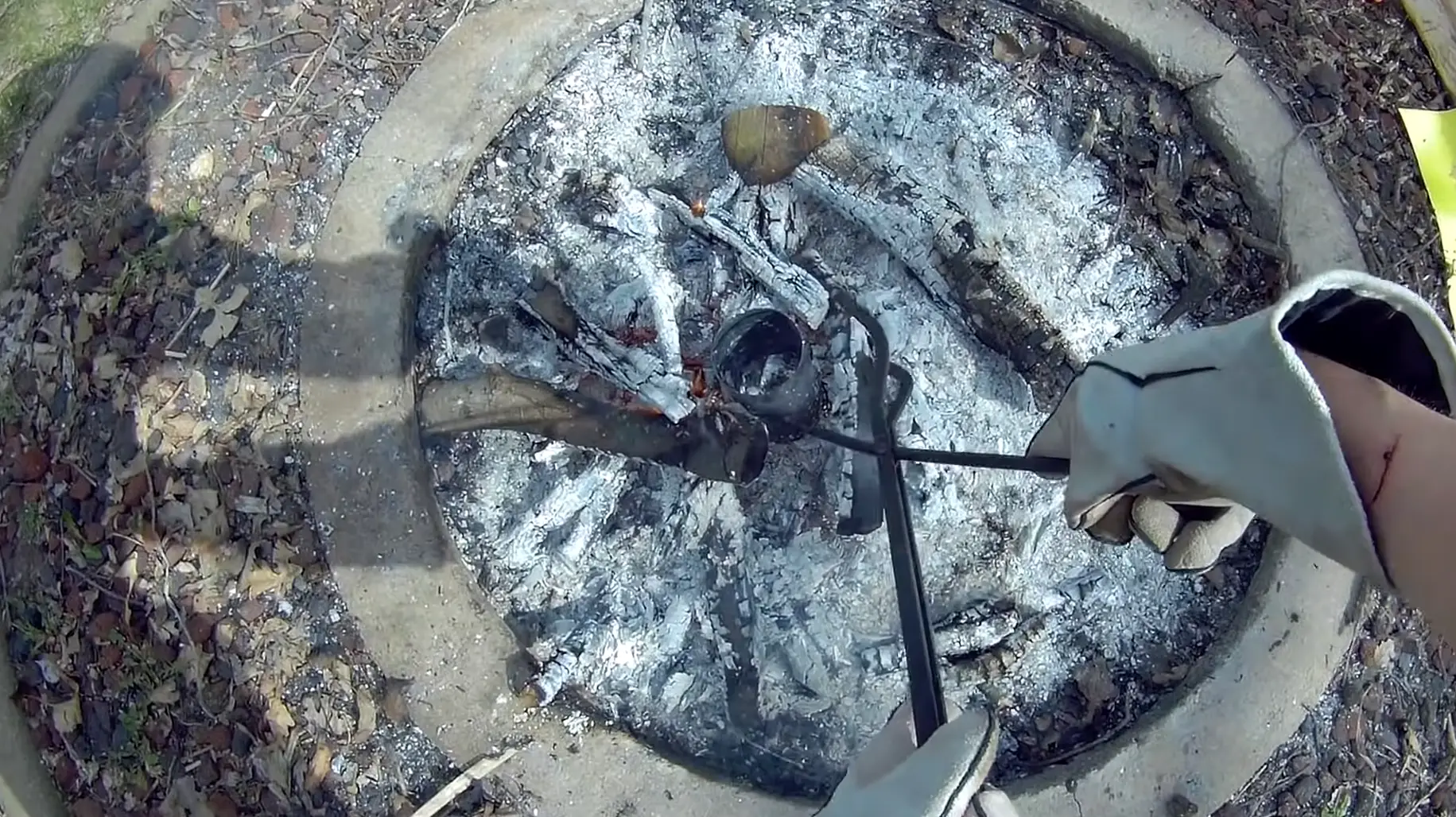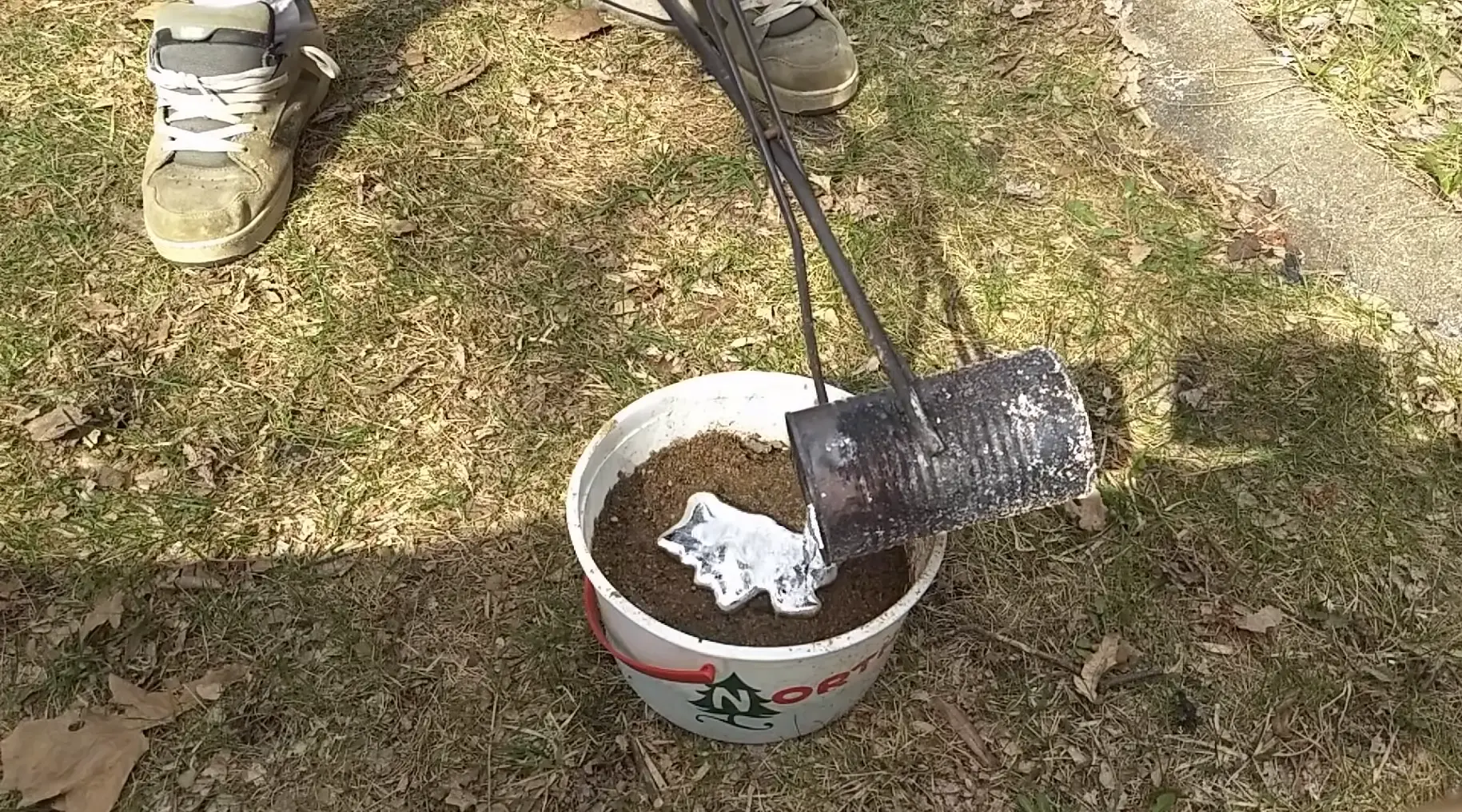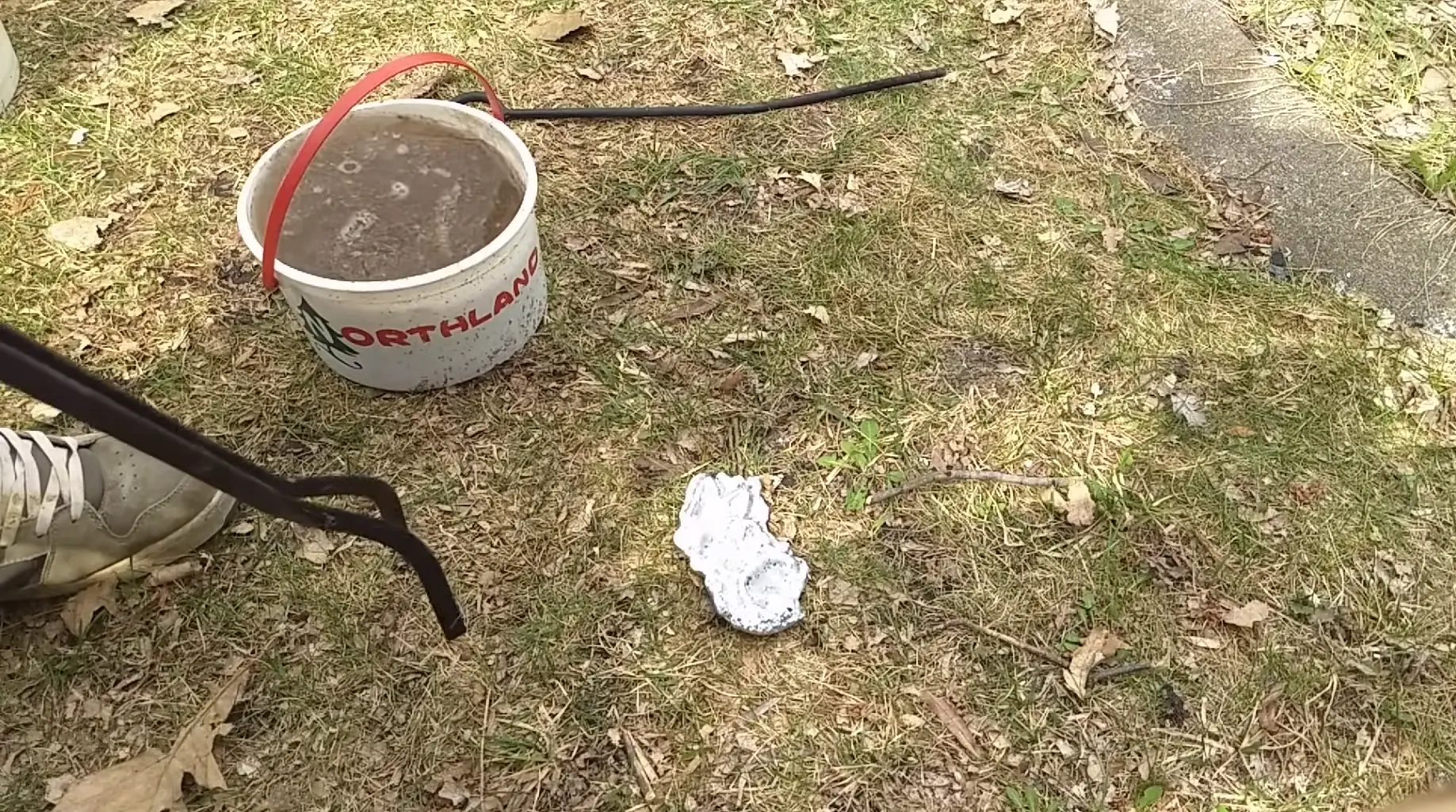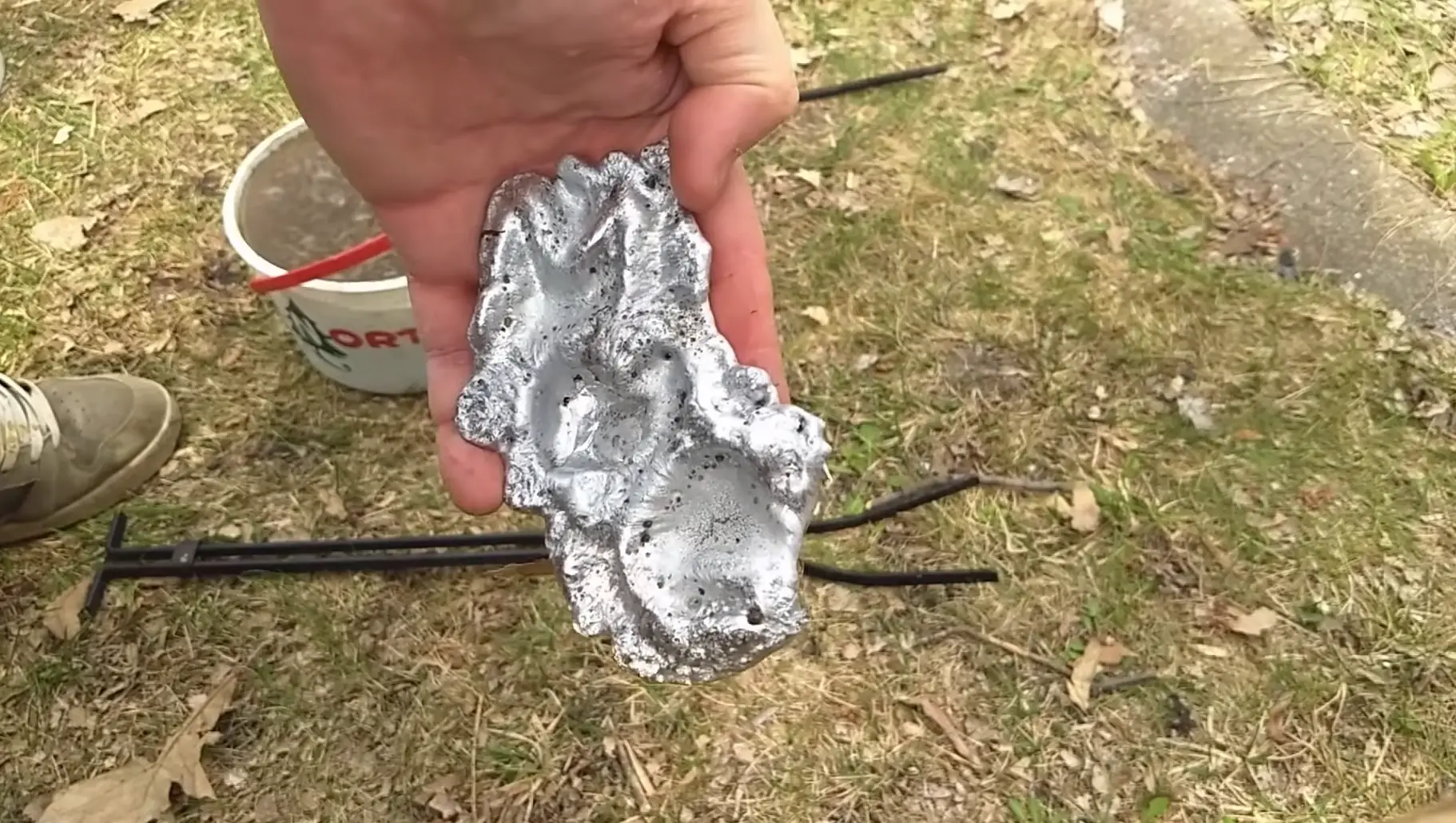Aluminum is a versatile metal that is used in a number of spheres from building construction to electronics. Melting aluminum at home may sound like a daunting task, but it is actually something that can be done with the right equipment and knowledge. In this post, we will cover the basics of how to melt aluminum at home, including the necessary equipment and safety precautions.
Aluminum And Its Properties
You may not realize it, but aluminum is a material that is all around us. From the cans we drink out of every day to the airplanes that take us to far-off destinations, this material is used in a huge amount of different applications. But what exactly is aluminum, and what are its key properties?
Aluminum is a lightweight, strong, and durable metal that is widely used in many different industries. It is the most abundant metallic element in the crust of our planet, and this element is present in such minerals as bauxite and cryolite. Aluminum is highly reactive and easily oxidized, which is why it is often found in nature as compounds rather than pure metal.
In construction, it is used in the form of structural framing, roofing, and siding. In transportation, it is used in automotive bodies, aircraft fuselages and wings, and train cars. In electronics, it is used in the form of wiring, heat sinks, and computer components. And finally, in packaging, you can take aluminum cans to store and transport beverages and food products.
One of the main benefits of aluminum is its low cost and abundance. It is also 100% recyclable, making it a sustainable choice for the future. The lightweight nature of the material means that it is really easy to handle, while its versatility and strength make it ideal for a wide range of applications. Additionally, aluminum’s ability to resist corrosion and withstand extreme temperatures makes it a highly durable and long-lasting material.
As technology evolves, the demand for aluminum is only expected to grow. New applications are constantly being discovered, and new innovations in manufacturing and processing are making it possible to use aluminum in even more ways. With a focus on sustainability and eco-friendliness, aluminum will play an important role in shaping the future of our planet.
Features of Aluminum
With its wide range of impressive features, it’s no wonder why aluminum has remained probably the most widespread metal in the world. Here we will be exploring some of the amazing features of aluminum that make it an essential material in manufacturing.
One of the main features is its lightweight. It is ideal for use in transportation and aerospace industries where every ounce counts. For example, in the aviation industry, aluminum is crucial for construction of aircraft components. Aluminum alloys are also important for the automotive industry, reducing the overall weight of vehicles, leading to better fuel economy.
Aluminum is highly durable, with a long lifespan. It is inherently resistant to corrosion, because of an oxide layer which is formed on its surface, preventing the metal from reacting with surrounding elements. That’s why aluminum is ideal for use in outdoor applications such as construction, where it will be exposed to harsh weather conditions. Aluminum is also resistant to extreme temperatures and can maintain its properties even when subject to extreme heat or cold.
The metal’s relative softness allows it to be easily cut, drilled, and machined to meet exact specifications. This feature enables aluminum to be utilized in the production of various components for different applications, from electronics to construction.
Aluminum can be finished in various ways, providing for an aesthetically pleasing appearance. It accepts all types of coatings and finishes, making it particularly useful for architects in creating beautiful façades and other building applications. Its beauty and strength make aluminum a great option for interior fixtures, furniture, and much more.
The use of aluminum in every industry from construction to aerospace has revolutionized the manufacturing industry, progressed technology, and made it possible for humans to attain what was impossible a few decades ago. The versatility and properties of aluminum have made it compete favorably with other conventional materials like steel, making it a sustainable choice for the years to come.
Benefits of Melding Aluminum
The world is evolving, and so are the techniques and materials used in manufacturing. One material that has gained immense popularity in the industrial sector is aluminum. Over the years, industries have harnessed its advantageous properties to produce superior products that cater to an array of demands. And to further enhance its properties, there’s a technique that is widely used; that is, melding Aluminum. It offers an avenue for improved quality and cost-effectiveness, among other benefits.
One of the most important benefits of melding aluminum is that it can improve the strength while still maintaining its lightweight properties. The welding process enhances the aluminum’s tensile strength, which makes it an ideal choice to produce high-performance products such as aerospace components (airplanes, satellites), automotive parts, marine vessels, and so forth.
Aluminum is a highly ductile material that can be shaped in various ways. With melding aluminum, experts can weld complex designs and shapes for various applications. This process widens the manufacturing possibilities by allowing the production of intricate, customized products that suit an array of industries’ diverse needs.
One of the significant drawbacks of welding metals is the time and energy it requires. Melding aluminum uses precise methods that generate cleaner, faster, and more efficient welding than traditional welding techniques. This not only leads to a more durable product with enhanced physical properties but also reduces production time and costs.
Melding aluminum is an eco-friendly technique since it doesn’t produce a lot of byproducts that can harm the environment. Moreover, it’s safer to handle and weld compared to other materials like steel and copper. This is because it doesn’t emit toxic fumes or sparks, making it the ideal choice to produce products for industries that prioritize safety and eco-friendliness.
Melding Aluminum is a revolutionary welding technique that boasts impressive benefits that meet various industries’ diverse demands. It’s corrosion-resistant, lightweight, strong, efficient, cost-effective, eco-friendly, and safe. From making aircraft components to producing innovative construction materials, melding aluminum broadens the possibilities of producing advanced products that cater to modern times’ demands. If you haven’t embraced this technique yet, it’s high time you consider it and join the bandwagon of top-notch manufacturers who leverage its benefits.
Molten Aluminum Hazards
When aluminum is melted, it becomes extremely hot and forms a liquid that can cause severe burns on contact with skin or other materials. The molten aluminum can also release harmful fumes that can be toxic to human beings. In addition, the metal expands when it melts, which can cause it to spill over and cause further hazards. It is, therefore, important to understand the hazards of molten aluminum and take necessary safety precautions when handling it.
Molten aluminum can pose several safety risks, such as explosions, thermal burns, and toxic fumes. The high temperatures used when melting aluminum can cause metal to spill over and create a fire or explosion hazard. Molten aluminum can also stick to skin or clothing and cause severe burn injuries. In addition, the fumes emanating from the molten metal can release hydrogen gas, which can lead to an explosion if not adequately controlled.
Molten aluminum hazards pose a considerable risk to people working in industries that handle the metal. Proper safety measures and training can help prevent accidents and injuries associated with these risks. Employers must provide comprehensive safety training and enforce strict safety protocols to keep workers safe. By understanding the potential hazards of molten aluminum and taking necessary precautions, we can help create a safer working environment.
Melting Aluminum: A Complete Guide For Beginners
This process involves transforming solid aluminum into a molten state using a furnace and specific equipment. While it may seem intimidating at first, understanding the proper steps and equipment will make the process simple and safe. [1]
Suitable Equipment:
Before starting the melting process, it’s essential to gather the right tools and materials. The equipment you need includes a crucible to hold the aluminum, a furnace to heat the metal, a pair of tongs to handle the crucible, and protective gear such as gloves, a face shield, and apron. It’s essential to use the proper equipment for your own safety and the success of your project.
Perfect Workspace:
A suitable workspace is necessary to ensure your safety and the success of the melting process. Choose a well-ventilated area without flammable materials in close proximity. Clean the area of any debris, and secure the furnace on a stable and level surface. A concrete surface or brick area is ideal. Keep a fire extinguisher within reach, just in case. [2]
Setting up the Furnace:
Before you start melting aluminum, you must first set up the furnace for the job. A furnace designed for aluminum melting should be able to reach temperatures of up to 1,200 degrees Celsius. To begin, you will need to connect your fuel source. Gas, propane gas, or electricity are the most popular. Next, clean the inside of the furnace and the crucible. Once the furnace is heated to the proper temperature, it’s time to start melting aluminum. [2]
Melting Process:
Begin by placing the raw aluminum pieces into the crucible using the tongs. Fill the crucible to around two-thirds full, leaving room for expansion. Place the crucible in the furnace and wait for the aluminum to melt fully. Stir occasionally with a metal rod to ensure an even melt. When the aluminum is fully melted, turn off the heat source, and use the tongs to remove the crucible. [1]
The Molten Metal:
Once the aluminum is in its molten state, it’s ready for use. Use a ladle to pour the liquid aluminum into your desired mold or container. Be cautious and precise with your movements, as molten aluminum can be hazardous. Allow for the metal to cool and solidify before handling, then remove it from the mold using a chisel or hammer.
Melting aluminum is a time-honored craft that can be learned by anyone willing to take the time to follow the proper guidelines with safety in mind. By investing in suitable equipment, creating the proper workspace, setting up the furnace correctly, and following the melting guidelines carefully, the process of melting aluminum can be a fulfilling adventure from start to finish.
Useful Tips For Melting Aluminum
Melting aluminum can be quite challenging because of its high melting point. Here we share some useful tips for melting aluminum that will help you achieve the desired results.
Tip #1: Use a Suitable Furnace
When melting aluminum, it is vital to use a furnace which will not be influenced by high temperatures. It must also be of the right size to accommodate the amount of aluminum you want to melt. A crucible furnace is the most commonly used furnace for melting aluminum. It is made of fireproof material and can withstand high temperatures. When choosing a furnace, make sure you choose one that is made for melting aluminum. [3]
Tip #2: Use the Right Crucible
The crucible is the container that holds the aluminum when it is melted. It is essential to use a crucible that is made of the right material. Graphite and ceramic crucibles are the most commonly used crucibles for melting aluminum. Graphite crucibles are more durable and can withstand higher temperatures, while ceramic crucibles are more affordable but can only be used at lower temperatures. [3]
Tip #3: Use a Flux
A flux is a substance that removes impurities from the aluminum when it is melted. It also helps to prevent oxidation. A flux is essential when melting aluminum because aluminum easily oxidizes, which can affect the quality of the finished product. Borax is the most commonly used flux for melting aluminum. It is mixed with water and added to the aluminum just before it is melted.
Tip #4: Preheat the Furnace
Before adding the aluminum to the furnace, it is essential to preheat the furnace to the right temperature. Preheating the furnace ensures that the aluminum melts evenly and does not solidify before it has been poured into the mold. The temperature at which the furnace should be preheated is determined by the type of aluminum being melted and the size of the furnace. [4]
Tip #5: Use Proper Safety Equipment
Melting aluminum is a dangerous process, and it is essential to use the proper safety equipment. Safety equipment includes gloves, goggles, and a face shield to prevent burns and eye injuries. It is also essential to wear a respirator to prevent inhalation of toxic fumes that are released when the aluminum is melted. [1]
Melting aluminum is not an easy task, but with the right furnaces, crucibles, fluxes, and safety equipment, it can be done successfully. Using the tips we have shared, you can now melt aluminum with ease, and achieve the desired results. Remember to always prioritize safety when melting aluminum and use the appropriate safety equipment at all times.
Safety Precautions When Melting Aluminum
To avoid accidents and injuries, it’s essential to take necessary safety precautions when melting aluminum. Let’s discuss these precautions in detail so you too can stay safe and get the most out of your aluminum-melting experience.
Before you begin working with any metal, it’s essential to have a good understanding of its properties, including the melting point. The melting point of aluminum is pretty low – around 660 degrees Celsius. But this also means that it can quickly get too hot, so it’s crucial to be well-informed about the melting process and to monitor the temperature as you work.
When melting aluminum, it’s essential to have the right equipment and tools. This includes a furnace or melting pot, a reliable heat source, and appropriate safety gear, such as gloves, goggles, and even a full-face respirator. As much as possible, use equipment specifically designed for melting aluminum, since other materials like steel may not be able to handle the heat or may contaminate the metal.
When heated, aluminum can release fumes that can be toxic when inhaled. In order to protect yourself you should wear protective gear such as a respirator or a full-face mask. It’s also best to work in a well-ventilated area to avoid inhaling fumes or vapors.
Finally, it’s important to take care of your equipment and tools to avoid accidents and ensure their longevity. Clean your melting furnace or pot regularly, and inspect it before each use to ensure its integrity and functionality. Replace worn-out or damaged parts immediately, and never attempt to use incompatible tools or equipment for melting aluminum.
Always take care of your tools and equipment and follow safe handling practices. By understanding and following these essential safety tips, you can enjoy a trouble-free and risk-free aluminum melting experience. Stay safe!
FAQ
Is it hard to melt aluminum?
Melting aluminum requires attention to detail, knowledge of the process, and proper safety procedures. It is not an easy task to do and should be approached with caution.
What is the best way to melt aluminum at home?
The best way to do so is by using a furnace. There are many types of furnaces available that are specifically designed for melting and casting metals, including aluminum. You can purchase a furnace or build your own from scratch, depending on your budget and level of experience.
Is it safe to melt aluminum at home?
Melted aluminum is extremely hot and can cause severe burns or even start a fire if not handled properly. Therefore, it’s essential to take the necessary safety precautions when melting aluminum at home.
Can you melt aluminum on a stove?
It’s not recommended to melt aluminum on a standard kitchen stove, as the high temperatures required for melting aluminum can cause damage to the stove and can be a fire hazard. Instead, use a furnace or other specialized equipment designed for melting and casting metals.
What liquid melts aluminum?
There is no liquid that can directly melt aluminum, but there are liquid metals that can be added to aluminum to lower its melting point for easier melting. One popular liquid metal for this purpose is bismuth, which has a low melting point and can be added to aluminum to create a low-temperature alloy. The alloy can then be melted at a lower temperature than pure aluminum, making it easier to work with.
Useful Video: How to melt aluminum cans at home
Conclusions
Melting aluminum at home can be a fun and rewarding experience, but it is important to follow safety precautions and use the proper equipment. Remember to have a well-ventilated area, fire-resistant surface, and a fire extinguisher nearby at all times. Be patient and allow your equipment to cool off before handling it, and dispose of any excess materials properly. With these guidelines in mind, you can safely melt aluminum at home and enjoy all the benefits this versatile metal has to offer.
References:
- https://www.thoughtco.com/melt-aluminum-cans-at-home-608277
- https://www.wikihow.com/Melt-Aluminum
- https://blog.thepipingmart.com/metals/how-to-melt-aluminium-at-home-an-overview/
- https://sciencenotes.org/how-to-melt-aluminum-cans-and-foil-at-home/

